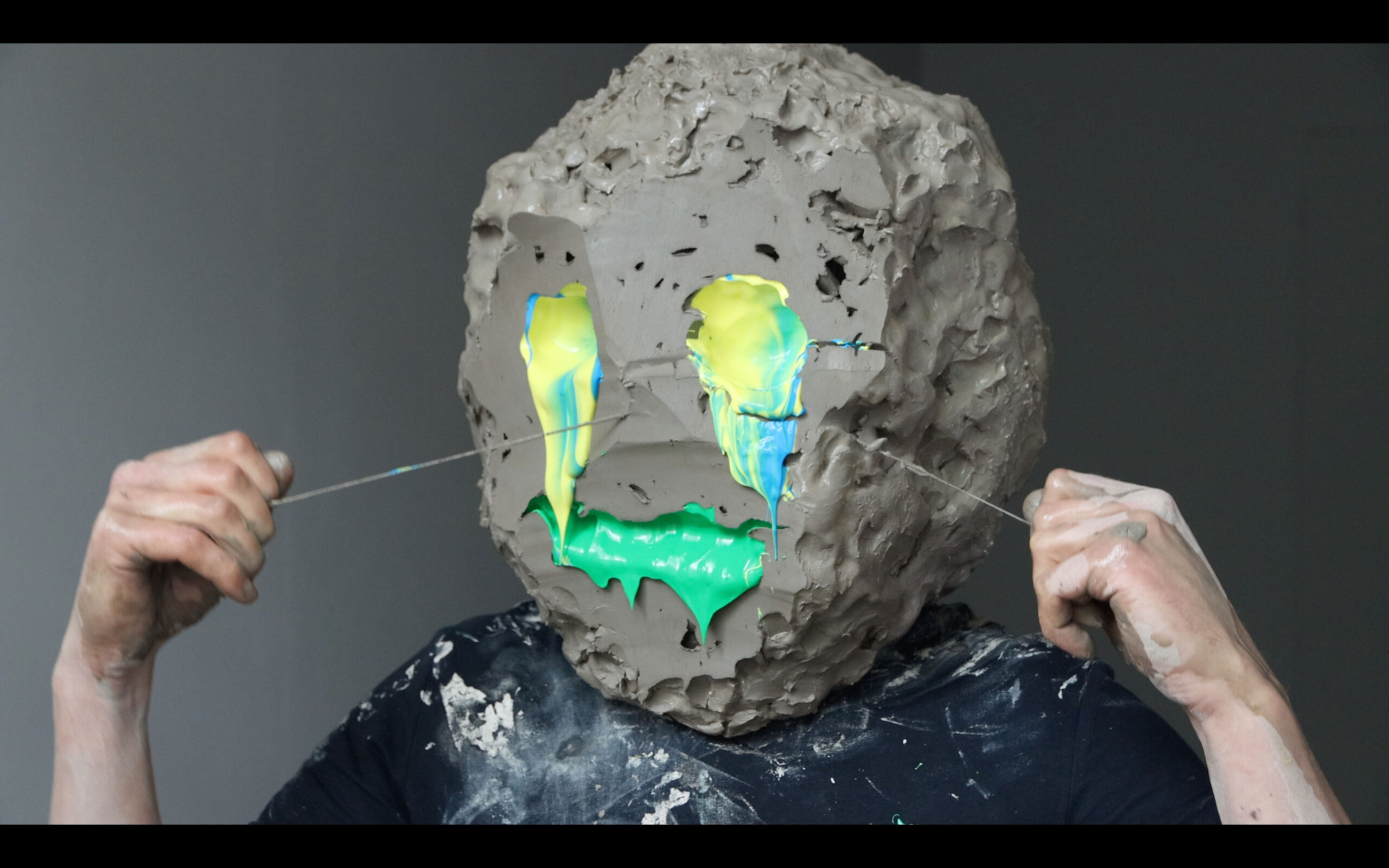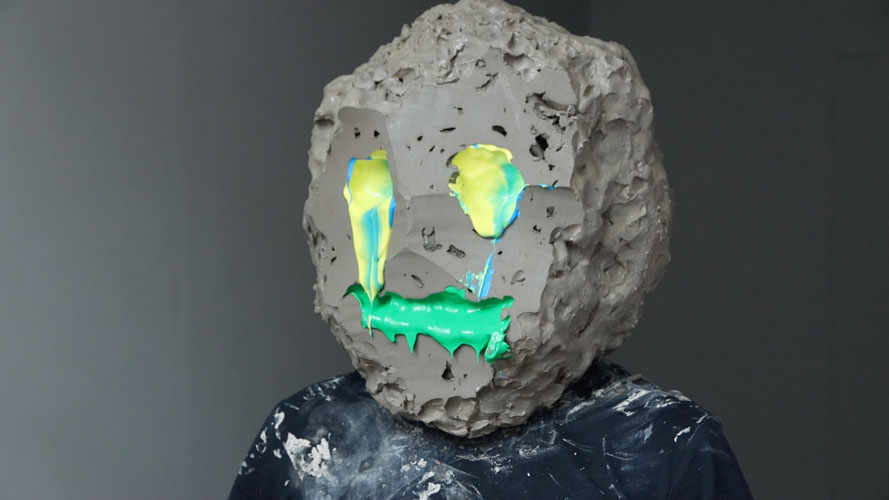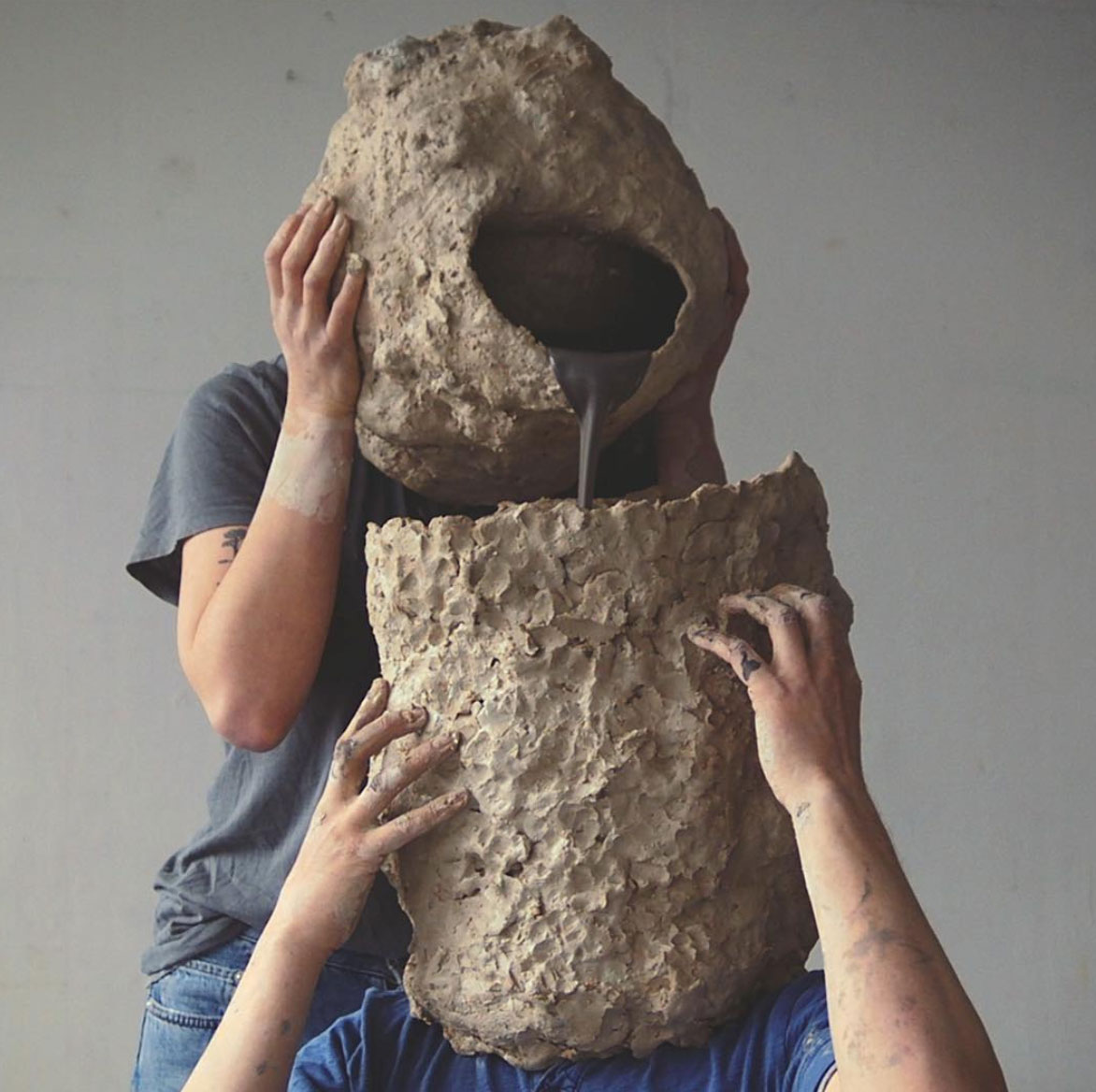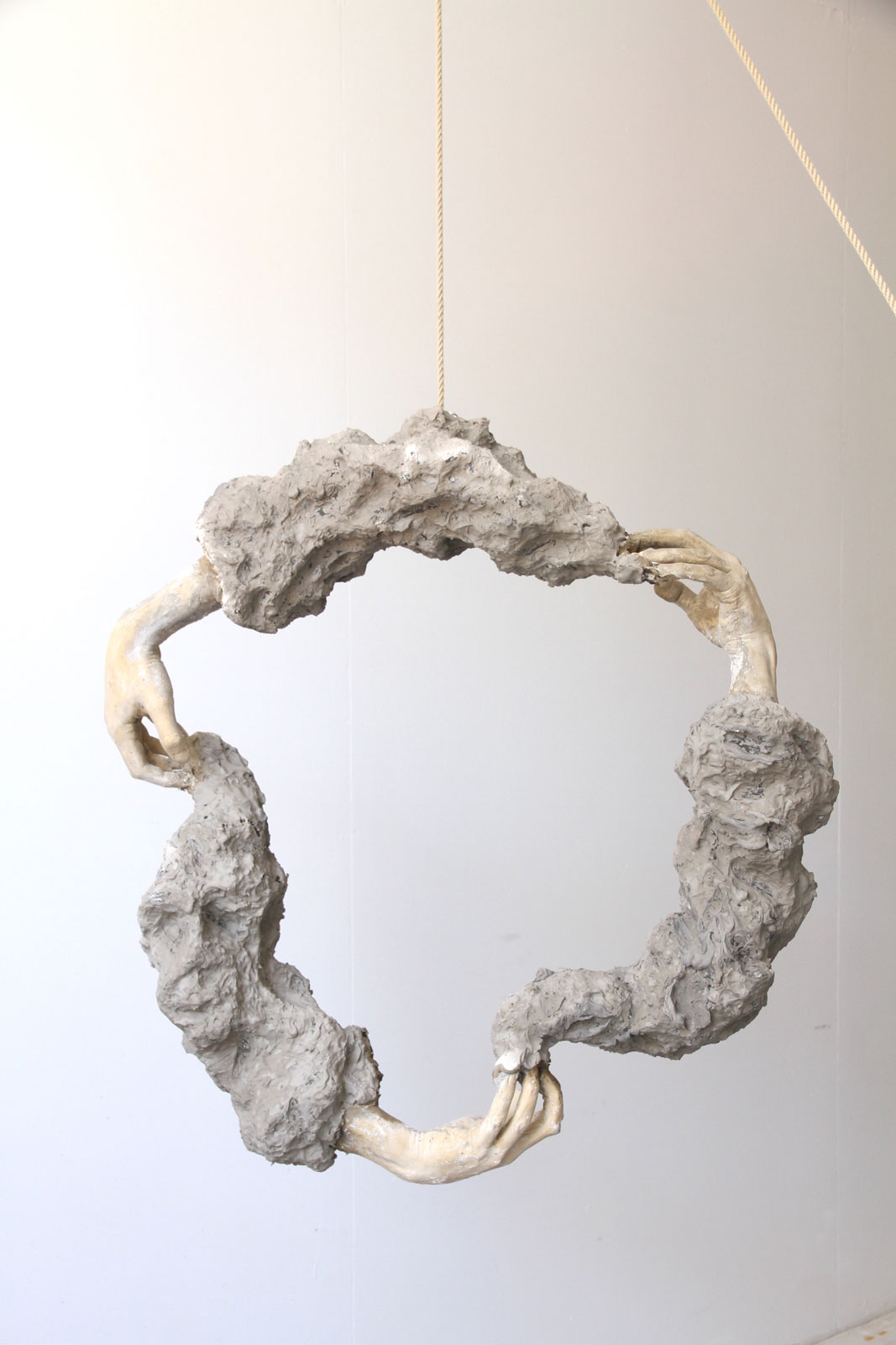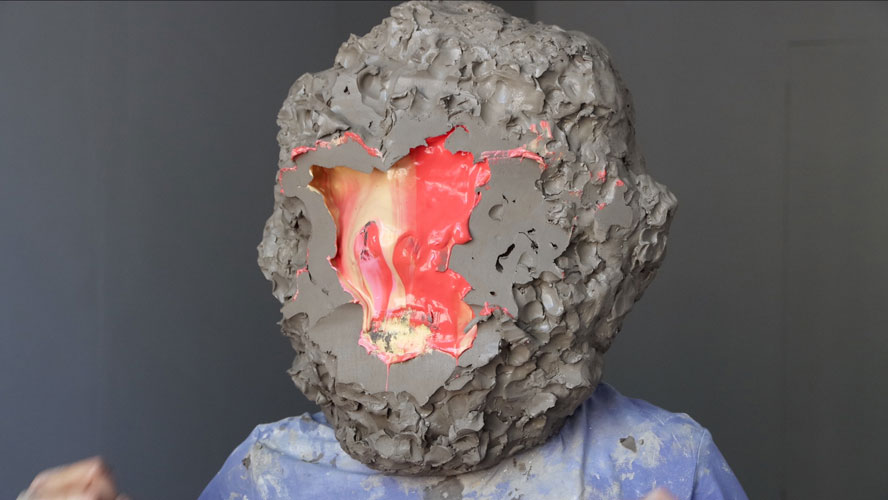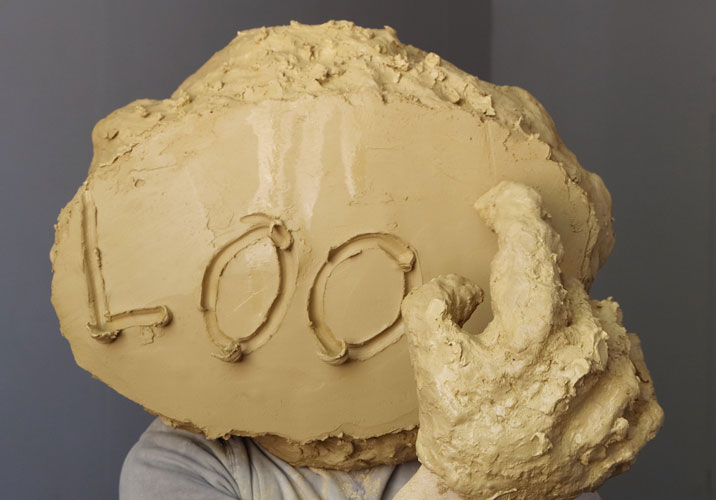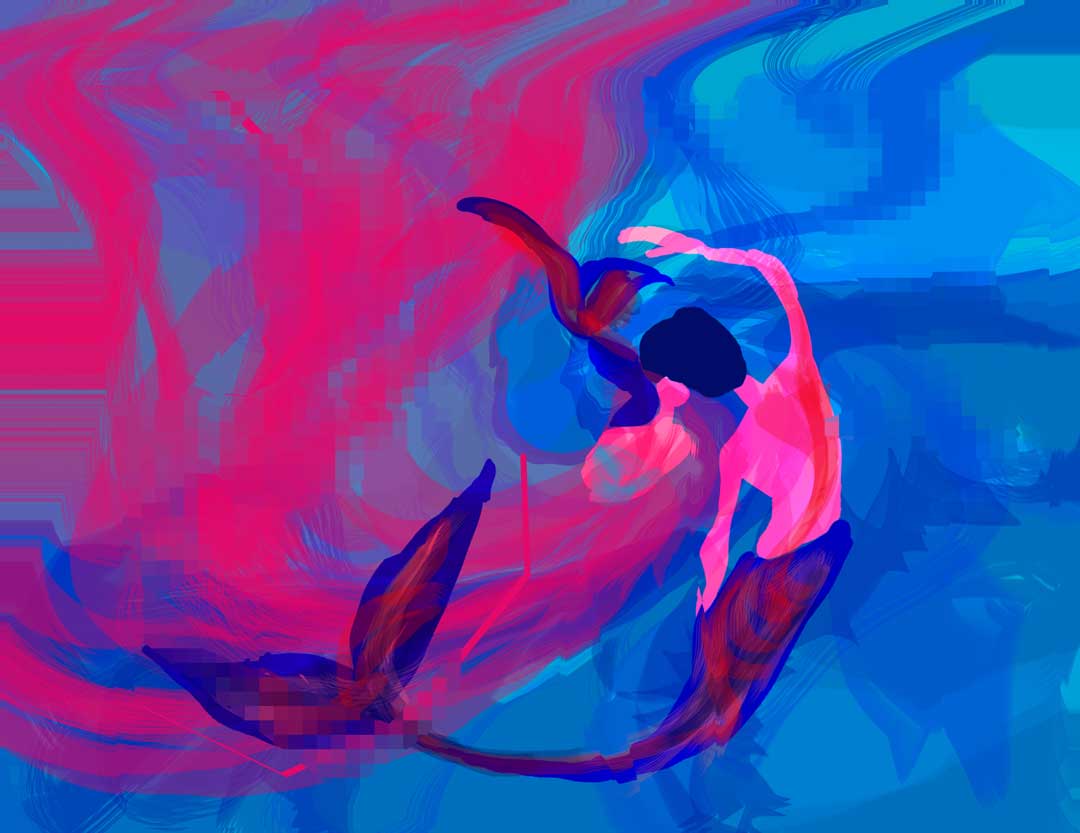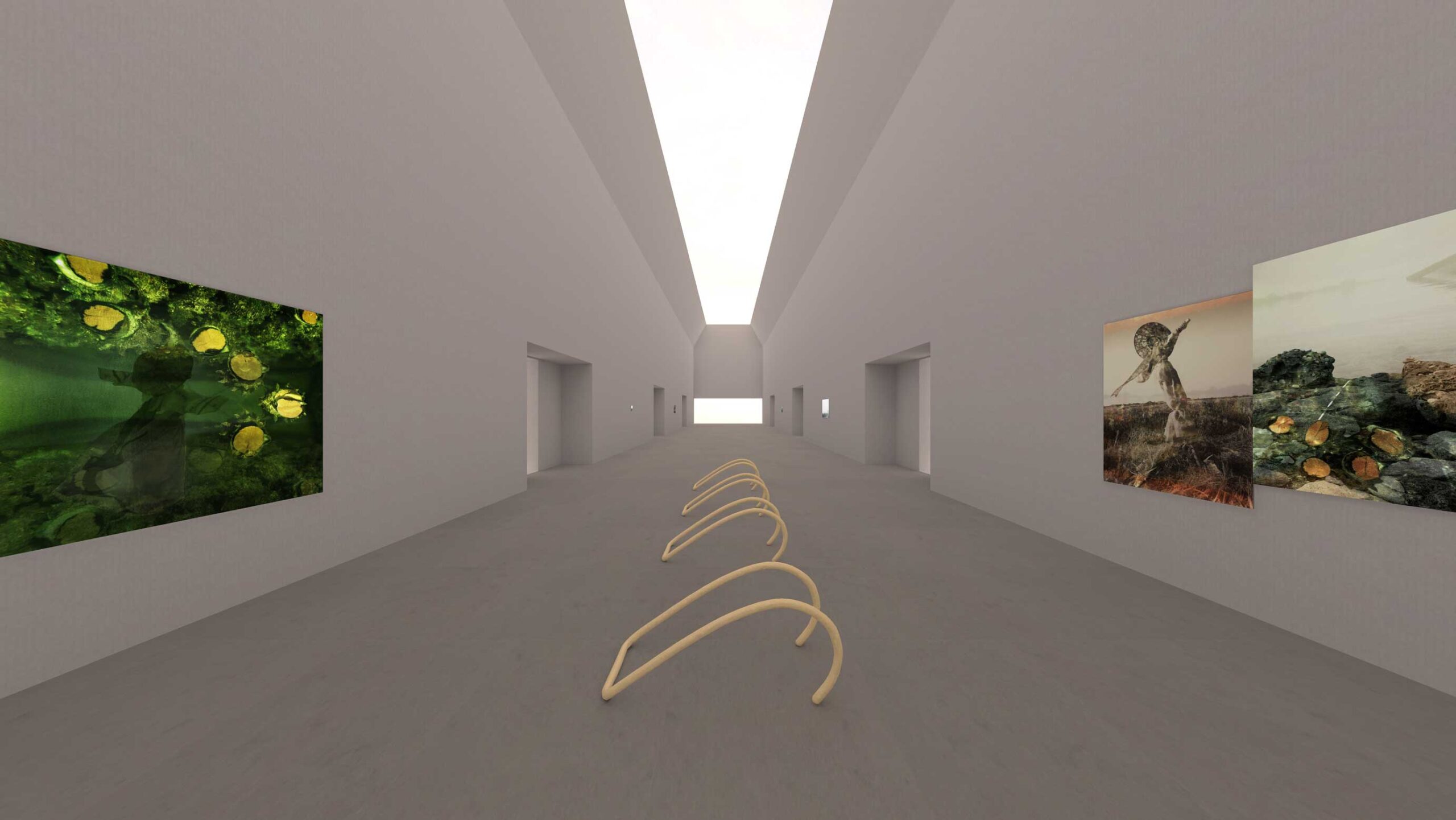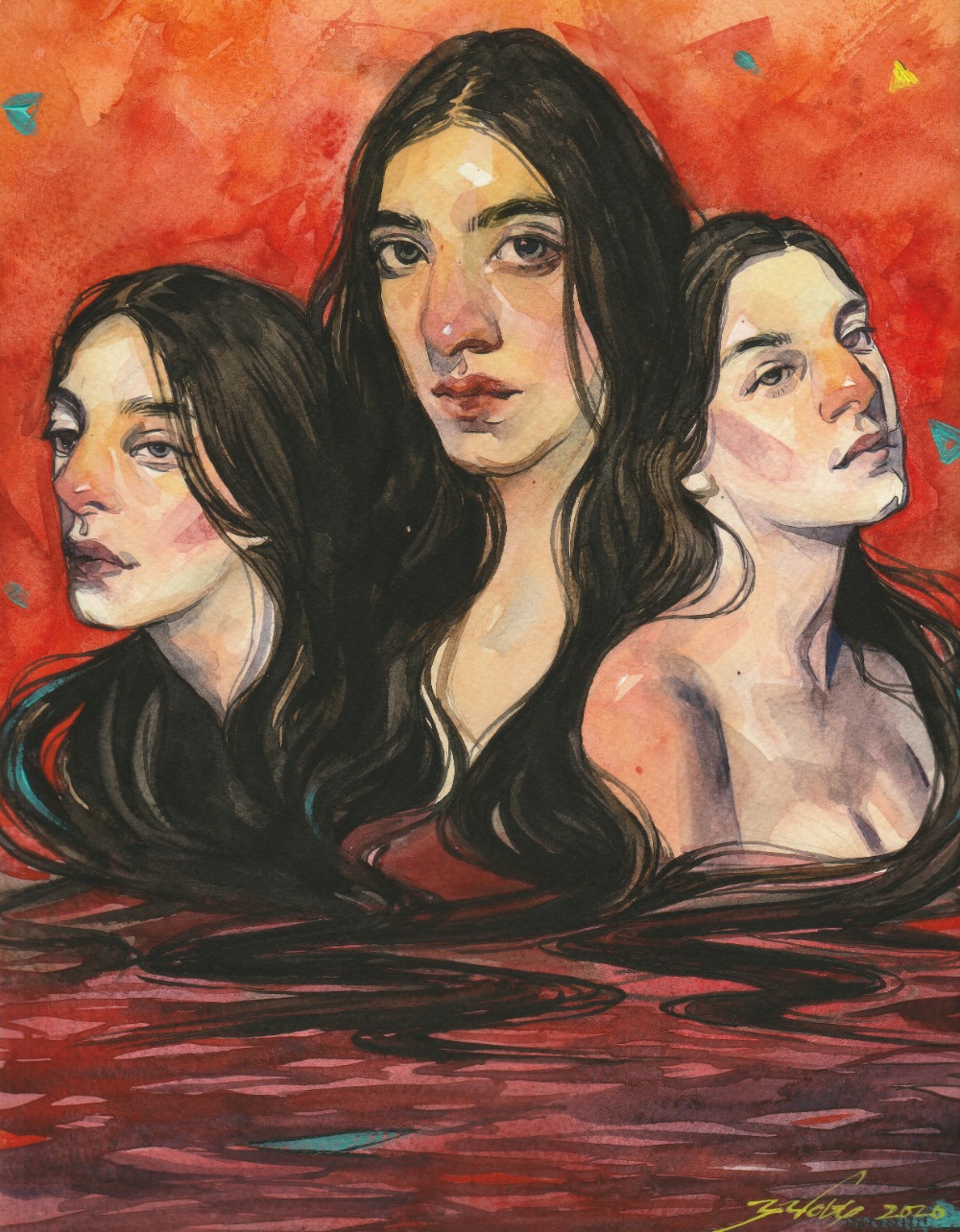William Cobbing is a sculptor based in London, United Kingdom. He uses clay and ceramic for most of his art works. He has also combined his sculptures with videos where he takes his artwork to a different realm of possibilities. His work has opened many doors to the life of absurd realities of our being. He shares an interesting relationship with Camus and has recreated the existing book covers of ‘The Myth of Sisyphus’ in clay. The ancient Greek story of Sisyphus pertains to the punishment Sisyphus received to roll a boulder to the top of the mountain only for it to roll to the bottom again and repeat an infinitum. Cobbing says, “I’m intrigued how physical material drives this narrative, and the inherent realization that pushing the boulder is a metaphor for any futile struggle”. He believes that we are drawn to art’s absurd nature because the world does not make complete sense to us and performance art can deftly express this idea of absurdity. He believes that through the act of physical humor one can help reveal deeper feelings, including a kind of pathos or even melancholia.
Cobbing’s work with clay is such a curious creation, a sloppy and slimy material giving meaning to the absurdness of one’s mind. Clay, as a material itself, holds an important place in human existence as most myths, folktales and scriptures endorse clay as the material used for creating human body. He says, “My art videos have a psychological aspect to them, which I see as both an abstract externalization of a kind of internal monologue, but being non-specific enough to provoke a broad set of feelings for the viewers”. Cobbing’s clay loosely refers to the myth of ‘Golem’. He believes that a creature like Golem provides endless possibilities of interpretation. He is intrigued by the idea of life emerging from inert material and taking form. The symbolism relating to Golem can be infinite as originally Golem is dumb, slothful, made of mud symbolizing an existence outside of the norms of society. He says, “the Golem is a shape shifter, unformed, mutable, neither male nor female, and there is freedom in this non-prescribed identity, both material and psychological, that provides scope to play with as a character.” In the Jewish myth, Golem can be brought to life by inserting a piece of paper called the ‘shem’, inscribed with God’s name, in the mouth or in the forehead of the Golem. He says that this idea is relevant to this work in which texts are scrawled into wet clay surfaces or writing inscribed onto a clay body or face.
One of his early works called Eating My Teeth is a video art work that shows a man with a clay head constantly scraping and manipulating the clay for a period of ten minutes. He says, “Sisyphus’ daily toil is a kind of metaphor for a repetitive loop, which lends itself to video art. There is a kind of mesmeric comfort in watching the same thing over again.” It can be comforting or disturbing at the same time for a viewer depending on one’s state of mind. Cobbing’s art videos can be either cathartic or completely existential and absurd. It makes one question one’s life, existence and relationship with oneself.
Cobbing’s Haptic Loop is inspired from the discord and contrast that appealed to him. This artwork combines two different materials including clay and the refined surface of life-cast hands manipulating the craggy and blobby clay forms. He says, “Clay is a slimy, viscous material, it clings to the skin’s surface, it becomes part of you, and you become part of the clay. This way a sense of tactility and probing a material takes precedent.” He draws parallels between clay and skin as the sense of touch on clay and surface of the skin in terms of how it can be prodded or caressed can vary.
Cobbing’s art video The Kiss explores a bizarre idea of human relationship with the self and the other. The idea itself disturbs the thought of conventional identity and cultural concepts of relationships. He says, “Abjection disrupts more uniform senses of body identity and boundary, creating a material tension between interior and exterior or attraction and repulsion.” His performance videos try to convey the thoughts and feelings of a human relationship. He believes that by covering the face with clay, the primary senses of sight, speech and sound are replaced with touch and so the figures are caught in a sense of blind intuition and emotion. Cobbing’s curious clay works in dimensions that a human mind cannot deny exists. He forces us to turn our gaze inward and for a moment focus on a singular sense and find meaning in its absurdity.
Upcoming Exhibition: The Princessehof National Museum of Ceramics in Leeuwarden will present the exhibition Human After All: Ceramic Reflections in Contemporary Art from 10 October 2020 to 5 September 2021.
Link to the exhibition here.
All Artworks by William Cobbing.
Text by Mariyam Fatima.
Curated by Romina Bertetti.


